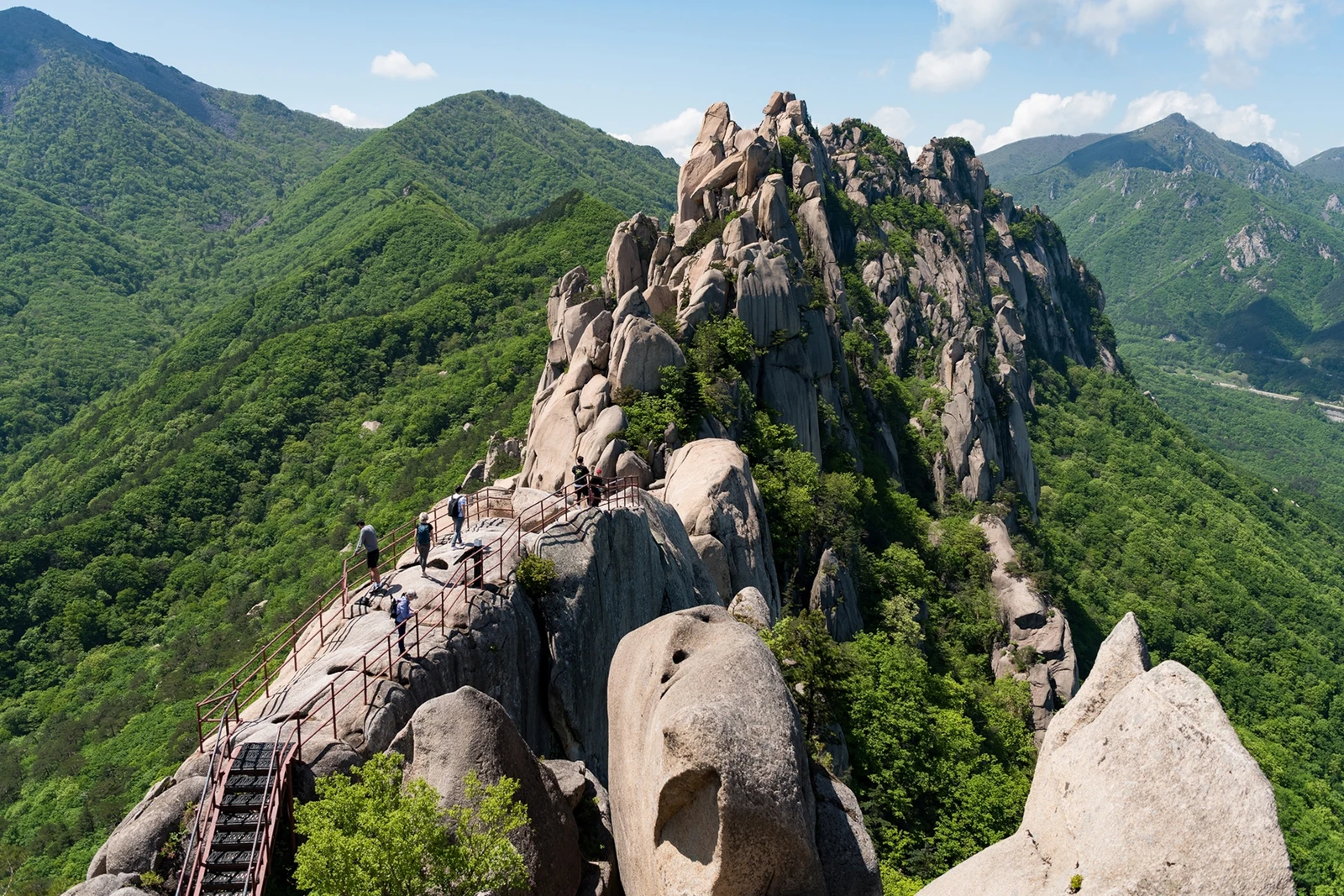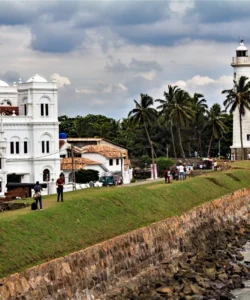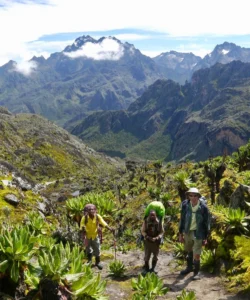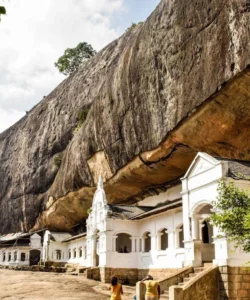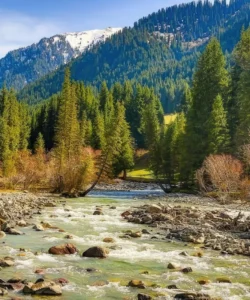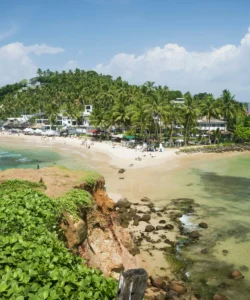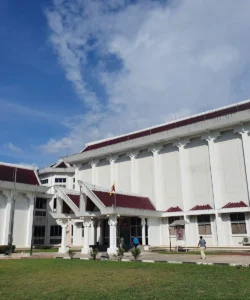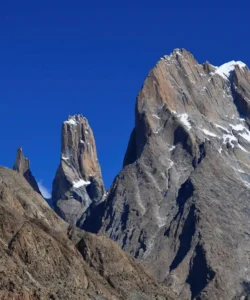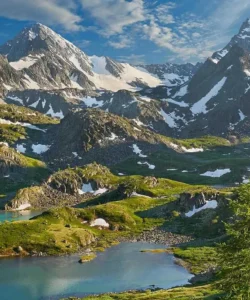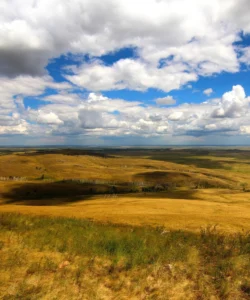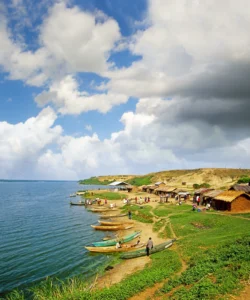Seoraksan National Park, often referred to as “Snowy Peaks Mountain” or “Snowy Crags Mountain,” is one of South Korea’s most stunning and cherished national parks. Located in the Gangwon Province on the country’s eastern coast, it is renowned for its dramatic granite peaks, crystal-clear streams, diverse flora and fauna, and ancient Buddhist temples. Designated a UNESCO Biosphere Reserve, Seoraksan offers breathtaking scenery and a wide array of outdoor activities throughout all four seasons.
![]()
Name: Seoraksan National Park (설악산국립공원; 雪嶽山國立公園)
Address: The main entrance points are generally in Sokcho (eastern side) and Inje/Yangyang (western/southern sides). The most popular access point for tourists is via the Sokcho entrance.
- Main Entrance (Sokcho side): Seoraksan-ro, Sokcho-si, Gangwon-do, South Korea.
How to get there:
Reaching Seoraksan National Park typically involves travel to Sokcho first:
- From Seoul to Sokcho:
- Express Bus: This is the most common and efficient way. Buses depart frequently from Seoul Express Bus Terminal or Dong Seoul Bus Terminal to Sokcho Intercity Bus Terminal. The journey takes approximately 2.5-3 hours.
- KTX Train: While there’s no direct KTX to Sokcho yet, you can take KTX to Gangneung or Jinbu, and then transfer to a local bus to Sokcho.
- From Sokcho to Seoraksan National Park (Main Entrance):
- Local Bus (Bus 7 or 7-1): From Sokcho Intercity Bus Terminal or Sokcho Express Bus Terminal, take local bus 7 or 7-1 directly to the Seoraksan National Park entrance. The ride is about 20-30 minutes.
- Taxi: Taxis are readily available in Sokcho for a direct ride to the park entrance.
Landscape and Architecture:
Seoraksan National Park’s landscape is defined by its rugged mountainous terrain, shaped by granite and gneiss, and features numerous natural and cultural elements:
- Dramatic Granite Peaks: The park is famous for its towering, craggy granite peaks, often referred to as “rocky teeth” or “stone teeth.” Daecheongbong Peak (1,708 meters / 5,604 feet) is the highest point within the park and the third highest in South Korea. Other notable peaks include Ulsanbawi Rock (a cluster of impressive granite peaks with unique shapes) and Gwengeumseong Fortress Peak.
- Deep Valleys and Gorges: Numerous valleys dissect the mountains, carving out deep gorges with rushing streams, waterfalls, and pools. Cheonbuldong Valley is particularly renowned for its scenic beauty, often called the “Valley of a Thousand Buddhas” due to its numerous rock formations resembling Buddhist figures.
- Waterfalls: The park boasts several beautiful waterfalls, including Biryong Falls and Towangseong Falls (South Korea’s third-highest, a majestic sight visible from a distance or reached via specific trails).
- Diverse Forests: The lower slopes and valleys are covered with a rich variety of deciduous and coniferous forests, leading to spectacular autumn foliage and lush greenery in summer.
- Ancient Buddhist Temples: Integrated into the natural landscape are ancient Buddhist temples and hermitages, adding a cultural and spiritual dimension:
- Sinheungsa Temple: Located near the main park entrance on the Sokcho side, it’s famous for its bronze Great Unification Buddha statue (Tongil Daebul), a massive sitting Buddha, and its historic gates. It’s an active temple where visitors can sometimes observe monastic life.
- Baekdamsa Temple: A more remote temple, often accessed from the Inje side, offering a tranquil and secluded spiritual experience.
- Heundeulbawi (Rocking Rock): A massive, seemingly unstable boulder located near Sinheungsa Temple, which can be rocked by hand, a popular curiosity.
- Cable Car: A cable car system (Seoraksan Cable Car) provides easy access to Gwongeumseong Fortress Peak (though the fortress itself is largely in ruins), offering panoramic views without a strenuous hike.
- Suspension Bridges: Various suspension bridges span gorges, providing thrilling crossings and unique photo opportunities.
What makes it famous:
Seoraksan National Park is famous for:
- Breathtaking Scenery: Universally praised for its stunning natural beauty, especially its dramatic granite peaks, pristine valleys, and vibrant seasonal foliage (especially autumn colors, which are among the best in Korea).
- Four Seasons Appeal: It’s magnificent in all four seasons – vibrant green in spring/summer, dazzling reds and golds in autumn, and snow-capped peaks with frozen waterfalls in winter, attracting visitors year-round.
- Hiking and Trekking: Offers a wide range of hiking trails from easy walks to challenging multi-day treks, catering to all fitness levels, including the demanding climb to Daecheongbong Peak.
- UNESCO Biosphere Reserve: Recognized for its rich biodiversity and importance as a natural habitat for various flora and fauna, including endangered species like the Siberian flying squirrel and the Korean goral.
- Cultural Heritage: The presence of ancient Buddhist temples like Sinheungsa and Baekdamsa, along with historical artifacts, provides a deep connection to Korea’s spiritual past amidst the natural grandeur.
- Iconic Rock Formations: Ulsanbawi Rock and Heundeulbawi are geological marvels that draw significant attention.
Differences from some other wonders:
Seoraksan National Park distinguishes itself from other national parks and mountainous regions in several ways:
- Granite Peak Dominance: While other parks have mountains, Seoraksan’s landscape is exceptionally defined by its dramatic, exposed granite peaks, often appearing craggy and sculpted, a more rugged and visually distinct profile compared to the rounded, forested mountains found in many other Korean parks (like Jirisan or Gayasan) or the volcanic peaks of Jeju Island.
- Combined Natural and Ancient Buddhist Heritage: It perfectly blends outstanding natural beauty with deeply rooted ancient Buddhist traditions, exemplified by its many temples and historical artifacts tucked into valleys and on mountainsides. This seamless integration of nature and centuries-old spirituality provides a holistic cultural and natural experience.
- Accessibility for Diverse Experiences: Despite its wild beauty, it offers a spectrum of experiences, from easy cable car rides for panoramic views to challenging multi-day treks, making its wonders accessible to a wide range of visitors, unlike some more remote or wilderness-only parks.
- Renowned Autumn Foliage: While many places have beautiful autumn leaves, Seoraksan is consistently ranked as one of South Korea’s absolute top destinations for fall foliage, attracting massive crowds during that season. Its specific combination of granite peaks, valleys, and diverse tree species creates a particularly stunning autumnal display.
- Coastal Proximity: Its location near the eastern coast (Sokcho) means visitors can combine mountain adventures with coastal town experiences, including fresh seafood and beach visits, a unique advantage compared to landlocked mountain parks.
In essence, Seoraksan National Park is a majestic jewel of South Korea, offering a profound journey through dramatic natural beauty, ancient spiritual sanctuaries, and a diverse range of outdoor adventures, making it a truly unforgettable wonder.
